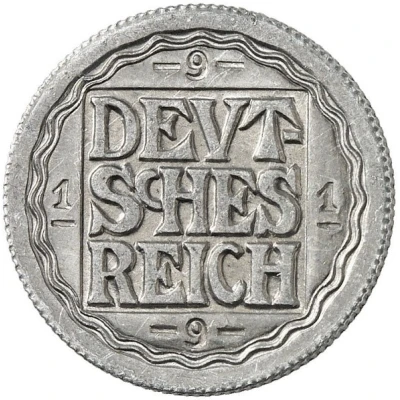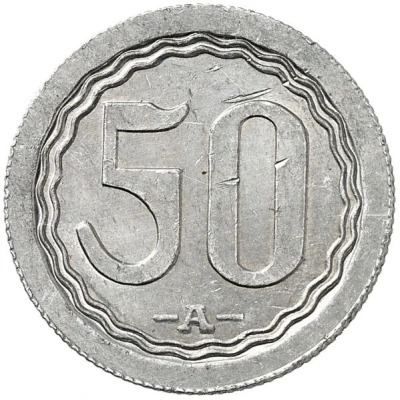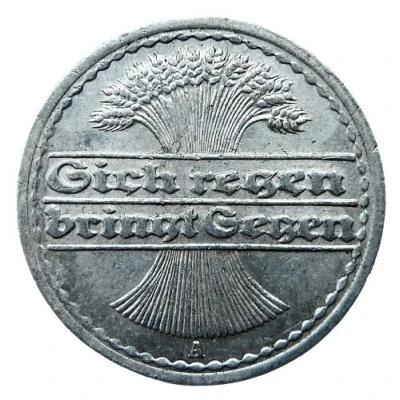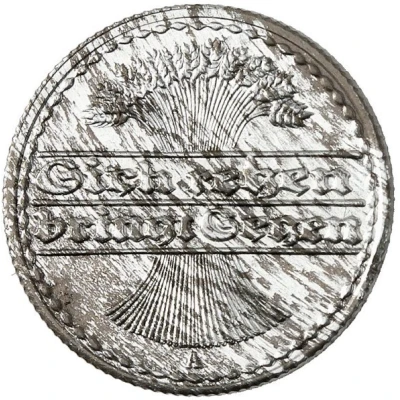
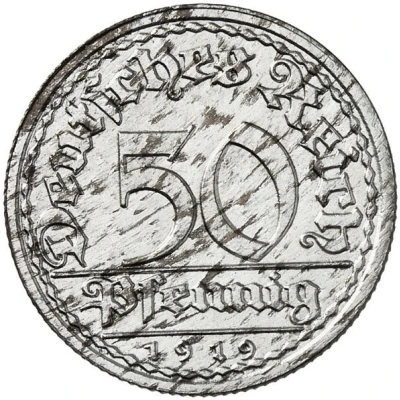

© Fritz Rudolf Künker GmbH & Co. KG, Osnabrück and Lübke & Wiedemann KG, Leonberg
50 Pfennigs Pattern
1919 year| Aluminium plated iron | 4.75 g | 22.9 mm |
| Issuer | Germany (1871-1948) |
|---|---|
| Period | Weimar Republic (1918-1933) |
| Type | Pattern |
| Year | 1919 |
| Value | 50 Pfennigs (50 Pfennige) (0.50) |
| Currency | Mark (1873-1923) |
| Composition | Aluminium plated iron |
| Weight | 4.75 g |
| Diameter | 22.9 mm |
| Shape | Round |
| Technique | Milled |
| Orientation | Medal alignment ↑↑ |
| Demonetized | Yes |
| Updated | 2024-10-05 |
| Numista | N#281444 |
|---|---|
| Rarity index | 94% |
Reverse
Value, date in exergue
Script: Latin (Fraktur blackletter)
Lettering:
Deutsches Reich
50
Pfennig
1919
Lettering (regular font):
Deutsches Reich
50
Pfennig
1919
Engravers: Reinhard Kullrich, Louis Oppenheim
Edge
Reeded
Interesting fact
One interesting fact about the Pattern 50 Pfennigs (Pattern) 1919 from Germany (1871-1948) made of Aluminium plated iron weighing 4.75 g is that it was designed by the German artist and engraver, Karl Goetz. Goetz was a prominent figure in the field of numismatics and his designs were known for their intricate details and artistic value. The Pattern 50 Pfennigs coin features an image of a woman, representing the German state, surrounded by an ornate border and inscriptions. The coin's design was meant to symbolize the country's economic and political stability during a time of great turmoil, following World War I.
